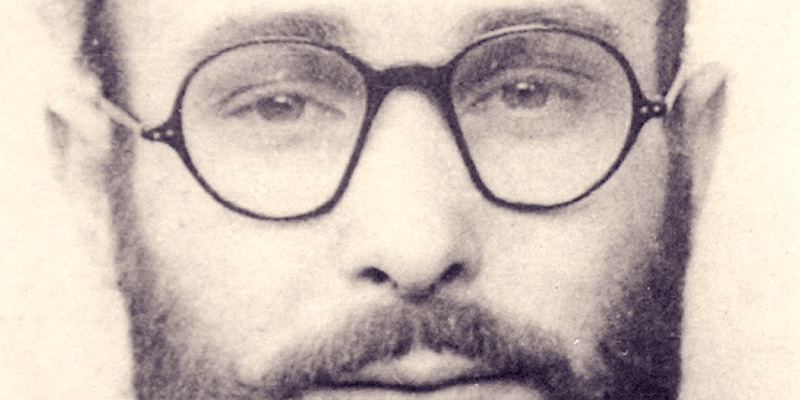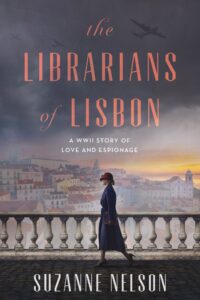Up until two years ago, when I heard the word “spy,” I thought of hidden daggers, poison vials, fake identities, and, of course, James Bond and the entourage of Hollywood spy characters that have come in his wake. All of these elements of espionage are, admittedly, exciting. They bring with them the dangerous, edge-of-your seat romance and thrills that I’ve come to expect from pop-culture spy tropes. It wasn’t until I started doing research into World War II espionage for my historical fiction novel, The Librarians of Lisbon, that I realized how limiting (albeit fun) this stereotype of spies is. What often goes overlooked and underappreciated is the extraordinary talent of real-life spies, not as masters of weaponry or stealth, but as masters of words.
Spies, by the very nature of their craft, must be tellers of tales. They have aliases, and these fabricated identities come with personalities, family backgrounds, long-lost loves, heartaches and triumphs. Not only does a spy working undercover have to commit to a new narrative with each new mission, they have to live the story they craft. Author Sonia Purnell said of World War II spy Virginia Hall, “She could be four different women in the space of one afternoon, with four different code names.” Hall posed as everything from a reporter to a dairy farmer to accomplish her missions. Aline Griffith, a beautiful former-model recruited by America’s OSS (Office of Strategic Services), posed as a socialite in Madrid in order to gather information on Nazi movements. Marie Christine Chilver (aka Agent Fifi) often posed as a journalist in bars and restaurants in Beaulieu, England, in order to “test” SOE (Special Operations Executive) trainees to see how much personal information they’d divulge to her (It did not bode well for the trainees when they confided too many secrets.). According to Elyse Graham, author of the fascinating Book and Dagger: How Scholars and Librarians Became the Unlikely Spies of World War II, spies weren’t supposed to carry weapons at all. Carrying weapons was too risky, because if a spy was caught, a weapon was an instant incriminator. Words, on the other hand, might serve as a spy’s most valuable alibi. Not only did spies have to craft narratives about their identities, but if captured, they had to spin yarns about their motives and movements as quickly and convincingly as possible.
This art of storytelling extended well beyond aliases. During World War II, scholars, academics, and librarians were recruited by America’s OSS and sent to Europe to gather information for the Allies, as well as to preserve and protect rare manuscripts and literary treasures in danger of being confiscated or destroyed by the Nazis (Read Kathy Peiss’s wonderful recounting of this in her book, Information Hunters: When Librarians, Soldiers, and Spies Banded Together in World War II Europe). It was no mistake on the American government’s part to turn to these brilliant minds for espionage work. Because of their attention to detail and their skills with careful reading and meticulous research, these men and women scoured phone directories, artillery manuals, and uncensored and underground newspapers looking for the tiniest kernels of information that might prove useful. These kernels, when brought together, might turn into a story in and of themselves—of troop movements, of names and activities of high-powered Gestapo, of horrific war-time truths about destruction, crimes against humanity, and tragic deaths. Adele Kibre, a scholar in medieval linguistics, proved indispensable to the OSS when, working as an agent in Stockholm, Sweden, she secured thousands of reels of microfiche documenting aerial raids and resistance activities, much of which was censored information by the Germans. She also obtained a copy of Industrie-Compass 1943, an extensive, secret directory of manufacturers and industries in Germany. Each of her acquisitions told a story about the war—each one helped the Allies piece the puzzle together of how Germany and the Axis powers were operating, and how the tide of the war might be turned.
World War II Double Agent Garbo, considered to this day to be one of the most talented and successful spies in the history of Britain’s MI5, was arguably also one of MI5’s best storytellers. Born in Spain, Garbo, whose real name was Juan Pujol García, was a veteran of the Spanish Civil War and held a deep-seated disdain for both communism and totalitarianism. He approached the British SOE to offer his services as a spy, but they turned him down repeatedly. Desperate to help the Allies, Garbo planned a drastic move. Relocating from Spain to Lisbon, he contacted a German handler, offering his services, and was recruited by Germany under the codename Alaric. It was at this point, hoping to prove his usefulness to the SOE, that Garbo began weaving an extraordinary web of lies to give him the credibility he needed to become a spy for Britain. With the help of his wife, Araceli, he crafted a fictitious network of twenty-seven spies, all of whom were supposedly reporting on the movements of British troops from within Britian itself. It was all a grand fabrication.
Each of these spies had a distinct backstory and personality, all crafted from Garbo’s inventive mind. There was a seaman, a soldier, a courier, an aviator, and many more. They hailed from a variety of countries, including Venezuela, Britain, and India. Garbo’s network was called the spinnennetz, or the “spider’s web.” His storytelling was so convincing that he soon became one of Germany’s most trusted and valued spies. When one of the spinnennetz spies purportedly died, the Germans sent condolences to the fake spy’s widow, and then she soon became a member of Garbo’s spy network herself. What makes Garbo’s feat of deception all the more incredible is that, from early 1941 until April 1942, he crafted these stories in Lisbon, without ever having set foot on British soil. He relied solely on the travel guidebooks and maps he’d secured of Britain and his own imagination. The Germans never suspected a thing. Eventually, his success as a spy for Germany caught the attention of Britain, and at last, he was recruited by MI5 and brought to London to continue his espionage work. Once he arrived in England, his spinnennetz reached a whole new level of credibility. Now, with the help of information from MI5, Garbo’s fake spies were able to report, many times quite accurately, about British troop and artillery movements. Sometimes the facts were real but had been deemed non-essential by the British and safe enough to pass onto Germany. Other times, Garbo and MI5 made sure some truthful information arrived in Germany’s hands too late to be of any great service to them.
Agent Garbo played a vital role in the success of Operation Fortitude and D-Day by spinning yet more stories. Operation Fortitude was, itself, one enormous lie, the purpose of which was to deceive Germany about the magnitude and location of D-Day. Garbo and his network told the Germans of a massive army forming along the coast of south-east Britain, commanded by General Patton himself, complete with tanks, landing crafts, and airplanes. He also led Germany to believe that the Allied invasion would take place in Calais, France, rather than in Normandy. It was all a ruse. The Allied army Gable told of was a “decoy,” made up of inflatables that looked deceptively real from the sky. But Germany fell for the trick, and in the days following the initial D-Day landing on June 6, 1942, thanks to one final message from Garbo, Hitler delayed sending reinforcements from Calais to Normandy. Because of this, the Allies were able to gain the upperhand, and eventually, go on to win the war in Europe.
If Garbo had not been so adept at storytelling, what would the outcome of D-Day, or in fact, the war might have been? If Adele Kibre and her team hadn’t sent three thousand reels of microfilm to the United States from Sweden, what vital information about the war might have been left undiscovered? If Virginia Hall had not been such a skilled chameleon at re-writing her own script, how many more people might have lost their lives instead of being rescued by her adroit espionage work?
Many spies, as I’ve come to understand through my recent research, are wielders of pen and paper more than cloaks and daggers. Yes, they operate in the shadows. Yes, they face incredible danger. But they do it all while spinning their own spider webs of stories, to ensure their continued survival and that of those they’re trying to protect. The tales they tell just might be their most powerful weapon of all.
***


















